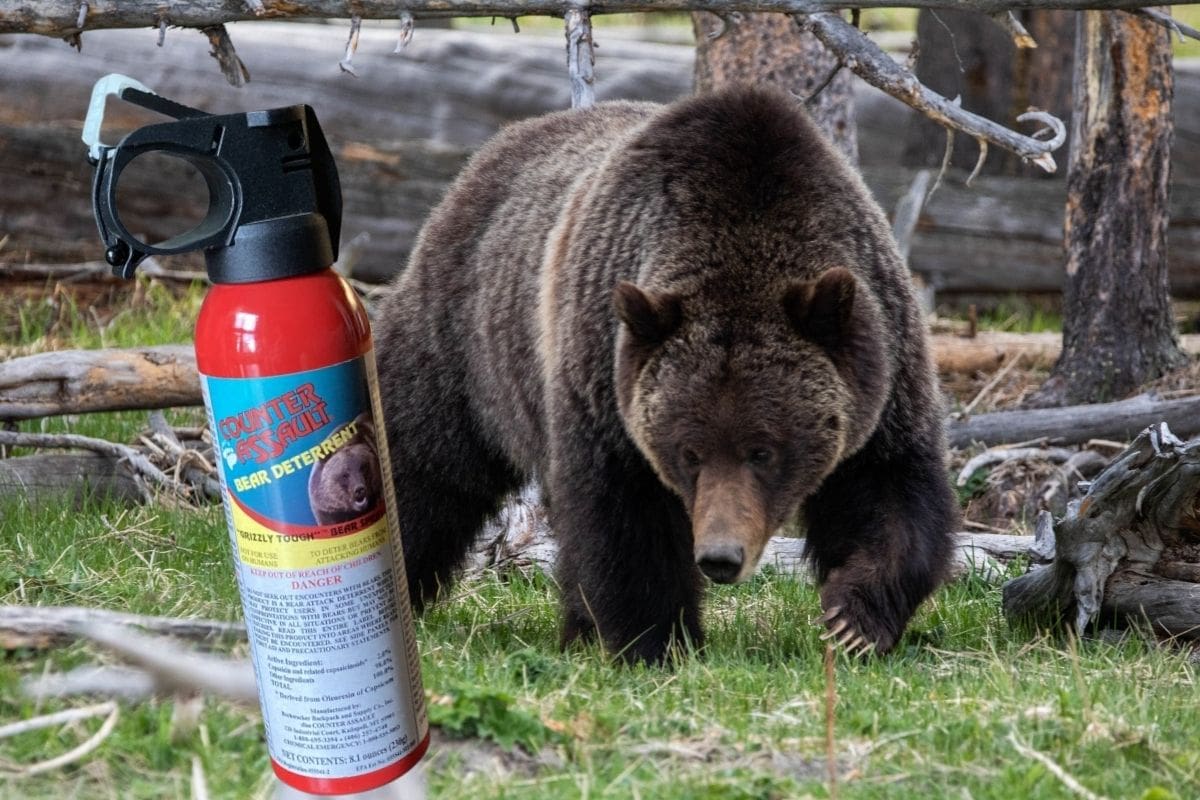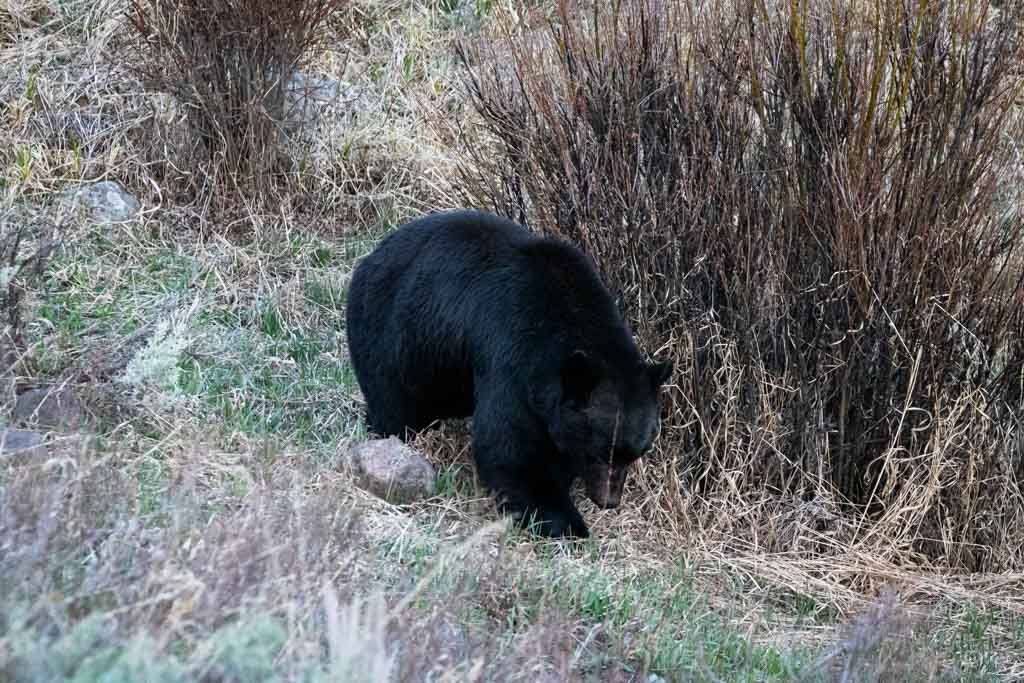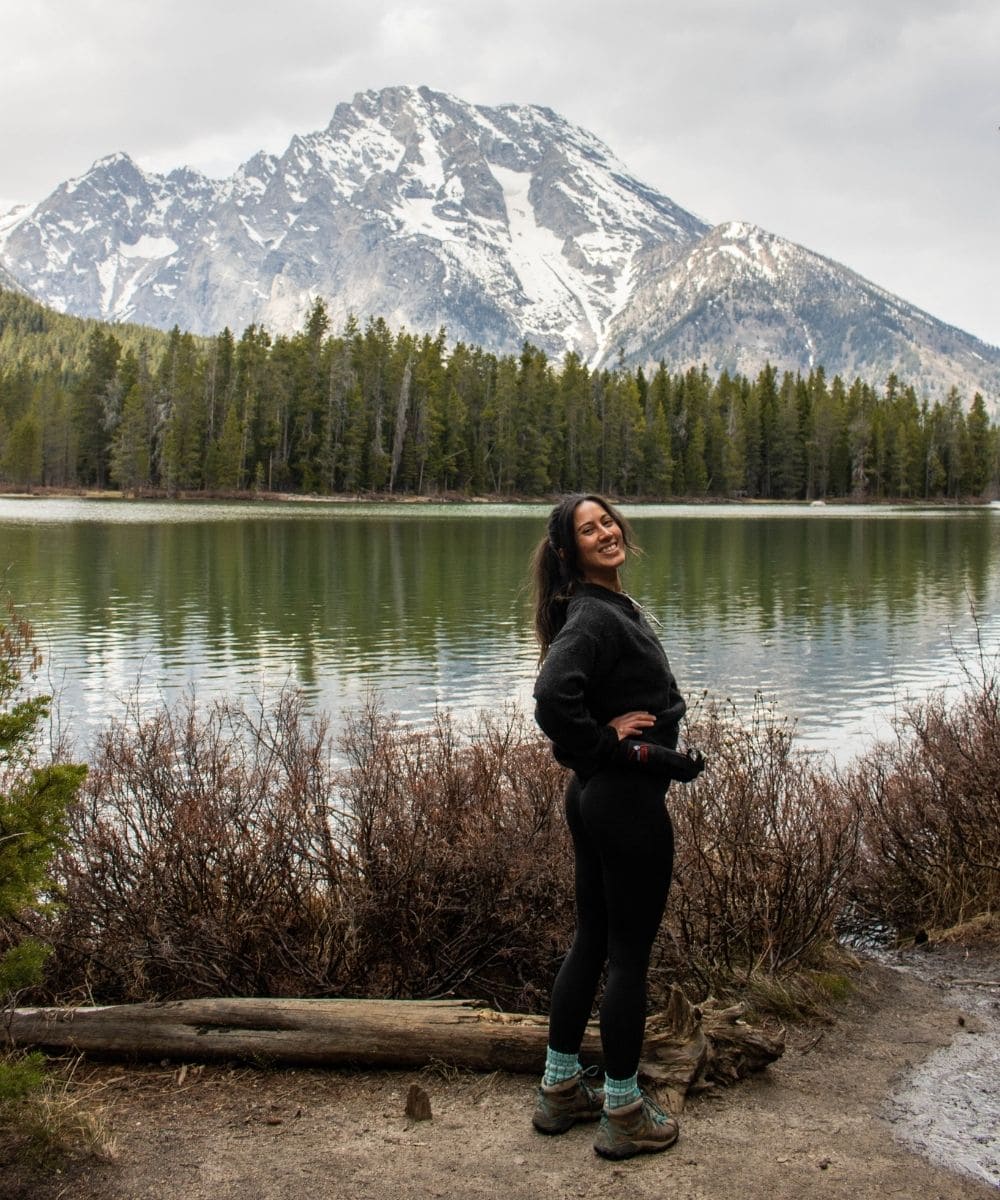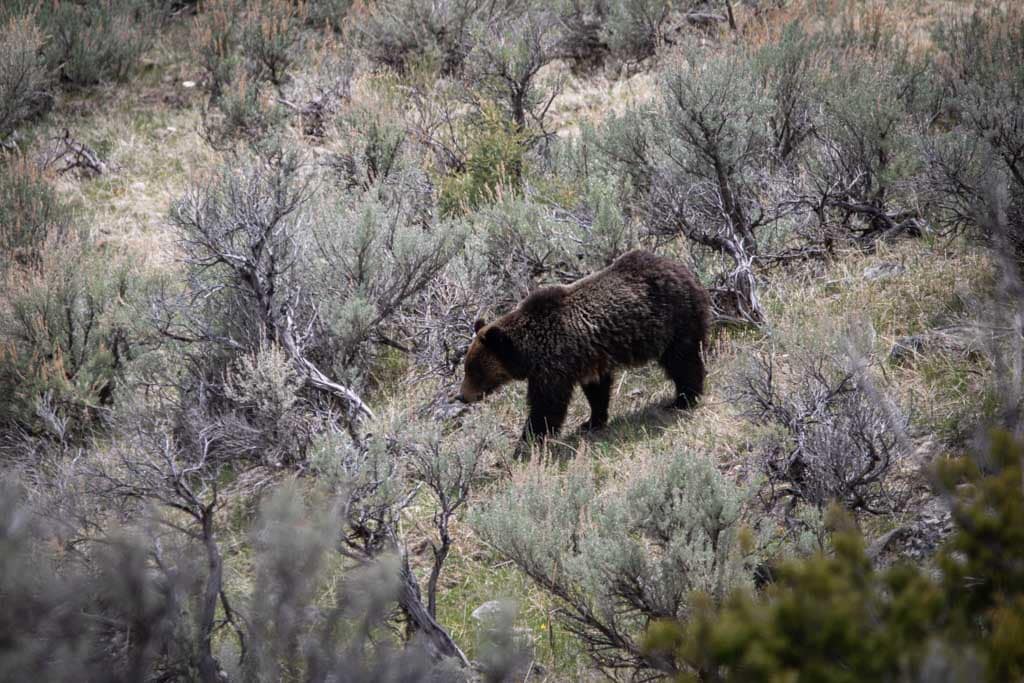How to Use Bear Spray Correctly
Getting charged by a bear is every hiker’s worst nightmare, an experience that can range from “just” terrifying to life-changing to actually deadly. So, whenever you’re heading into bear country, you should carry and know how to use bear spray correctly.
While there are several things you can, and should, do while recreating in bear country, surprise encounters are always possible.
In the unfortunate event a bear does charge you, bear spray is your best way of getting out of the situation alive and, hopefully, unscathed.
In this post, I’ll talk about the best ways to carry bear spray and tell you how to use bear spray correctly. After all, simply buying or renting a canister of bear spray isn’t sufficient—at all. You really do have to know how and when to use it.
First things first, though…
What Is Bear Spray?

This post about how to use bear spray contains affiliate links. You can read more about our Terms of Use / Disclosure here.
You probably know the purpose of bear spray already, but in case you don’t, it’s pretty straightforward. Bear spray is proven to be a highly effective way to stop aggressive behavior in bears.
Bear spray is a non-lethal deterrent designed to stop aggressive behavior in bears. Its use can reduce human injuries caused by bears and the number of bears killed by people in self-defense.
National Park Service
It’s important, however, to not confuse bear spray with basic pepper spray. Pepper spray should never be used as a substitute for actual bear spray, for two reasons. One, it is literally illegal to sell pepper spray for use against bears. Two, pepper sprays are not monitored by the EPA and their ingredients can vary wildly. Many aren’t even strong enough to deter bears.
The active ingredients of bear spray are Capsicum derivatives, including Capsaicin and its related Capsaicinoids. Sprayed into a cloud, this is a non-lethal—very important!—way to temporarily reduce a bear’s ability to see, smell and breathe.
Simply put, bear spray causes irritation and inflammation in the nose, throat, mouth, eyes and lungs of a bear.
This will severely inhibit its inhaling and exhaling ability, which, in practice, means the bear won’t be able to keep up a charge or attack.
Additionally, bear spray is, in fact, regulated by the EPA. Bear spray canisters must have clear labels indicating what they are, the ingredients they contain, their intended use, as well as usage information such as spray distance and duration.
The Be Bear Aware Campaign recommends getting bear spray that can spray 30 feet or more and for at least 7 seconds.

How to Carry Bear Spray Properly
Bear charges and attacks can be so surprising and sudden that you won’t have enough time to get your bear spray out of your backpack. Therefore, you should carry your bear spray in a place that’s readily accessible. It literally shouldn’t take you more than a second to grab it.
There are a few different ways to carry bear spray while hiking. Most bear spray canisters that are sold online, in outdoor stores or national park shops come with their own belt holster.
This convenient holster can be attached to your backpack’s shoulder or waist straps, or your belt. I’ve also seen people wearing their bear spray holster around one of their legs with an elastic band.
Whatever works for you is fine, as long as you keep your spray within easy reach.
Alternatively, you can also buy an actual bear spray holster belt, which you can attach around your waist. If you can reach it without having to take off your backpack, you could keep your spray in a side mesh pocket of your backpack, too.
I’m a huge fan of the Counter Assault bear deterrent products. Check them out via the following links (to Amazon).

How to Use Bear Spray Correctly
When or if you should use your bear spray depends on the situation you’re in. Let’s walk through three different scenarios.
A Distant Bear Sighting
If you see a bear while hiking, but it’s far away and hasn’t noticed you, slowly back away. Get out of there without making a big fuss or being overly loud.
A Close Encounter
On the other hand, if the bear is close and/or has seen you too, talk to it in a steady and calm voice. Make yourself bigger and, again, slowly back away. Do NOT run.
Get your bear spray ready, but don’t spray if the bear doesn’t actually approach you. Remember that bear spray is meant for use on actually charging or attacking bears. It does not work preventively.
A Charge or Attack
The third scenario is by far the most terrifying. If a bear does charge you—this usually happens in case of a surprise grizzly bear encounter, if you encounter a sow with cubs, or a bear that’s protecting a food cache—grab your bear spray as quickly as you possibly can.
Bears can run up to 30 miles per hour, which means they can get to you in just a couple of seconds.
In practical numbers, that means a bear 60 feet away can reach you in just 1.5 seconds. And of course, the closer the encounter, the less time the animal needs. So, if you encounter a bear only 20 feet away, it can be on top of you in 0.5 seconds.
Again, keep your bear spray readily accessible!
During a charge or attack, this is how to use bear spray correctly:
- Remove the safety clip (which is a white or orange clip on Counter Assault bear sprays).
- Start spraying when the charging bear is just under 60 feet away, depending on the type of encounter. For close encounters, spray immediately. (Most charges occur when the bear is about 30 feet away.)
- Aim downward and, if you have time, adjust for possible wind direction. Aim for a spot on the ground about 30 feet in front of you. (The spray will float upward and create a cloud the bear must pass through.)
- Continue spraying until the bear changes its direction.
- If the bear keeps charging, spray directly into its face.
- (If you think the bear will make contact, turn around and drop down to the ground. Lay on your stomach, clasp your hands together over your neck. Keep holding the canister and spraying upward. Create a cloud of spray around you and the bear.)
- Leave the area as soon as the bear is gone.

Important Tips for Using Bear Spray the Right Way
In addition to knowing when and how to use bear spray correctly, the National Park Service offers a few other tips related to bear spray and safety you should know.
- As I said above, get bear spray that can spray for at least 7 seconds and 30 feet or more.
- Check its expiration date. Get a new canister if expired.
- Never use bear spray preventively like you might insect repellent. Don’t spray bear spray on people or gear. It does not work that way and its scent may even attract wild animals, including bears.
- Don’t store bear spray in your car or close to heat sources. The canister can explode if temperatures approach 120°F or more.
- Ensure your bear spray is EPA approved.
- Practice makes perfect. Buy an inert canister of spray to practice with. Remove it from your holster until it’s a reflex, remove the safety clip, fire the inert spray in different wind directions. Get comfortable using bear spray.
- Once again, keep your bear spray within easy reach!
Bear Safety in the National Parks
Now that you know how to use bear spray the correct way, let’s see what you can do to avoid a bear encounter in the first place, and how to act during an encounter.
I’d like to refer to the following guides for more information, which talk respectively about black bear safety and grizzly bear safety.








